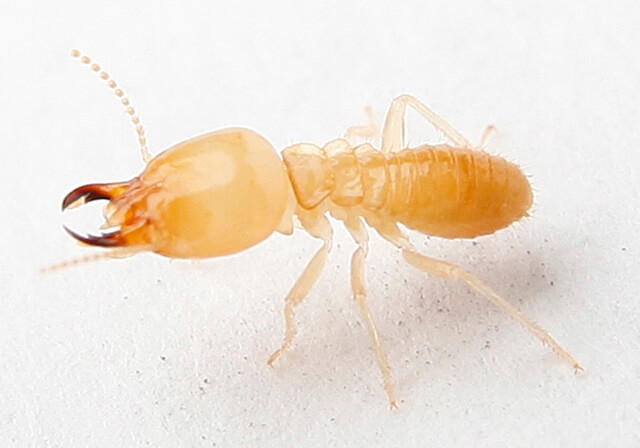White ants, more commonly known as termites, are notorious for causing extensive damage to homes and structures. Their silent but destructive nature makes them a significant threat to homeowners. Learning how to get rid of white ants effectively requires knowledge, persistence, and the right approach. By taking proactive measures and understanding their behavior, you can protect your property and save yourself from costly repairs.
In this comprehensive guide, we will walk you through the process of identifying, managing, and eliminating white ants, ensuring your home stays safe and secure from these destructive pests.
Understanding White Ants
White ants, or termites, are small, social insects that thrive in colonies. They are often mistaken for ants due to their appearance but are quite different in behavior and biology. These pests feed on cellulose, which is found in wood and plant matter, making homes with wooden structures particularly vulnerable. There are several types of termites, including subterranean, drywood, and dampwood termites, each with unique habits and habitats.
Termites are known for their ability to chew through wood undetected, causing structural damage over time. They form tunnels and nests in and around homes, making them difficult to detect until significant damage has occurred. This is why early detection and swift action are crucial in termite control.
How to Identify a White Ant Infestation
Identifying a white ant infestation early can save you from extensive damage. Termites are sneaky, but there are telltale signs that can help you spot their presence:
- Mud tubes: Subterranean termites create mud tubes to travel between their colony and food sources. These tubes are often found near the foundation of a house.
- Hollow-sounding wood: If wood sounds hollow when tapped, termites may have eaten away its interior.
- Discarded wings: After mating, reproductive termites shed their wings. You might find these around windowsills or other entry points.
- Frass: Drywood termites leave behind small piles of wood-colored droppings known as frass. This is often found near infested wood.
- Sagging floors or ceilings: Extensive damage may cause floors or ceilings to buckle or sag.
If you notice any of these signs, it’s time to take immediate action.
Common Types of White Ants
Understanding the type of termite you’re dealing with is essential to creating an effective extermination plan. Here are the most common types:
- Subterranean termites: These are the most destructive and build colonies in the soil. They create mud tunnels to reach wood above ground.
- Drywood termites: These termites live inside the wood they consume and do not require contact with soil.
- Dampwood termites: Dampwood termites prefer moist wood and are often found in areas with high humidity.
Each type of termite requires slightly different treatments, so it’s important to correctly identify the type of termite infestation before proceeding.
How to Prevent a White Ant Infestation
Prevention is the best way to avoid the headaches that come with termite infestations. Here are some proven prevention strategies:
- Reduce moisture levels: Termites are attracted to moisture, so it’s important to repair any leaking pipes, faulty drainage systems, or standing water near the foundation of your home.
- Maintain proper ventilation: Ensure that crawl spaces, attics, and other areas prone to moisture are well-ventilated.
- Store wood properly: Keep firewood, lumber, and paper away from your home. Store them at least 20 feet away and five inches off the ground.
- Seal entry points: Use caulk to seal cracks and crevices around your home, especially near the foundation and around windows.
- Use termite-resistant materials: If you are building or renovating, consider using termite-resistant materials like treated wood or metal.
Natural Methods for Eliminating White Ants
For those who prefer chemical-free solutions, there are several natural methods to combat termites. While these may not be as potent as chemical treatments, they can still be effective when used properly.
- Orange oil: Derived from the peels of oranges, this oil contains d-limonene, which is toxic to termites. You can inject it into affected wood to kill termites on contact.
- Neem oil: Neem oil disrupts the reproductive system of termites, making it difficult for them to grow their colony. Apply it to wooden structures to keep termites at bay.
- Boric acid: A common household item, boric acid can kill termites by disrupting their digestive system. Apply it as a powder to infested areas or use it in bait traps.
- Nematodes: These are microscopic worms that feed on termites. You can introduce beneficial nematodes into your soil to naturally reduce termite populations.
Chemical Solutions for Getting Rid of White Ants
Sometimes, natural remedies aren’t enough to tackle a serious infestation. In such cases, chemical treatments provide a more reliable solution.
- Liquid termiticides: These are applied to the soil around your home’s foundation, creating a barrier that termites cannot cross. Popular products include Termidor and Taurus SC.
- Termite baits: Bait systems are set up around the perimeter of your home. These baits contain a slow-acting poison that termites consume and bring back to their colony, effectively wiping out the population.
- Fumigation: For severe infestations, whole-house fumigation may be necessary. This involves sealing your home and filling it with toxic gas to eliminate termites.
Professional Termite Control: When to Call an Expert
While DIY solutions can be effective, sometimes professional help is needed to handle a large infestation. Termite control professionals have the tools, experience, and knowledge to eradicate termites quickly and efficiently.
- Termite inspections: A professional can conduct a thorough inspection of your home to identify the extent of the infestation and the best course of action.
- Professional treatments: Experts use advanced techniques such as heat treatment, foam applications, and advanced baiting systems that are not always available to homeowners.
- Warranties: Many pest control companies offer warranties on their termite treatments, providing peace of mind that your home will be protected for years to come.
Can White Ants Return After Treatment?
Yes, termites can return after treatment if preventive measures are not taken. However, with proper termite control methods and ongoing maintenance, the risk of re-infestation is significantly reduced. After treatment, it is essential to monitor your home regularly and implement preventative strategies such as keeping the area dry, maintaining barriers, and scheduling annual inspections.
How to Fix Termite Damage
Termite damage can be costly and labor-intensive to repair. If termites have caused significant damage to wooden structures in your home, the affected areas may need to be replaced or reinforced. Minor damage can often be repaired with wood fillers, but extensive damage to load-bearing structures requires professional repairs. Regular inspections and early detection can help prevent serious damage from occurring.
White Ant Control: The Importance of Regular Monitoring
After you’ve successfully rid your home of termites, ongoing monitoring is critical. Schedule regular termite inspections and keep an eye out for the warning signs of a new infestation. Additionally, consider installing termite monitoring systems around your property to detect termite activity early.
How to Get Rid of White Ants in Wooden Furniture
White ants can infest more than just your walls; they can also target your wooden furniture. To protect your valuable pieces, you can:
- Treat with boric acid: Spray or apply boric acid to the affected furniture. This kills termites and prevents further infestation.
- Expose to sunlight: Termites are sensitive to heat. Leaving furniture in direct sunlight for a few hours can kill the pests.
- Freeze the furniture: If your furniture is small enough, you can place it in a freezer for several days to kill termites.
Maintaining a Termite-Free Home
After you’ve eradicated white ants from your home, it’s essential to maintain the cleanliness and structural integrity of your property. Ensure that all areas prone to moisture are well-ventilated, keep debris and firewood away from your home, and regularly inspect your property for any signs of termites. By being vigilant, you can keep your home safe from future termite infestations.
FAQs
1. How long does it take to get rid of white ants?
Ans – The time it takes to get rid of white ants depends on the extent of the infestation and the treatment method used. Some treatments, like fumigation, can eliminate termites in days, while baiting systems may take weeks.
2. Are white ants dangerous to humans?
Ans – White ants are not harmful to humans directly, but their ability to cause structural damage can pose a significant risk to the safety of your home.
3. Can white ants eat through concrete?
Ans – Termites cannot eat through concrete, but they can enter through cracks and gaps, which allows them to access wood and other cellulose materials.
4. What attracts white ants to my home?
Ans – Termites are attracted to moisture, wood, and organic materials. Leaky pipes, poor drainage, and wooden structures close to the ground can all attract termites.
5. Can I get rid of white ants without chemicals?
Ans – Yes, natural methods such as orange oil, neem oil, and boric acid can help control termites. However, severe infestations may require chemical treatments.
6. Do termites leave on their own?
Ans – Termites will not leave your home on their own. They will continue to feed and expand their colony until they are exterminated.
Conclusion
Understanding how to get rid of white ants is crucial for protecting your home from their destructive nature. Whether you opt for natural methods, chemical solutions, or professional extermination services, it’s important to act quickly and decisively. By following the prevention tips and monitoring your home regularly, you can keep your home safe and termite-free for years to come.



